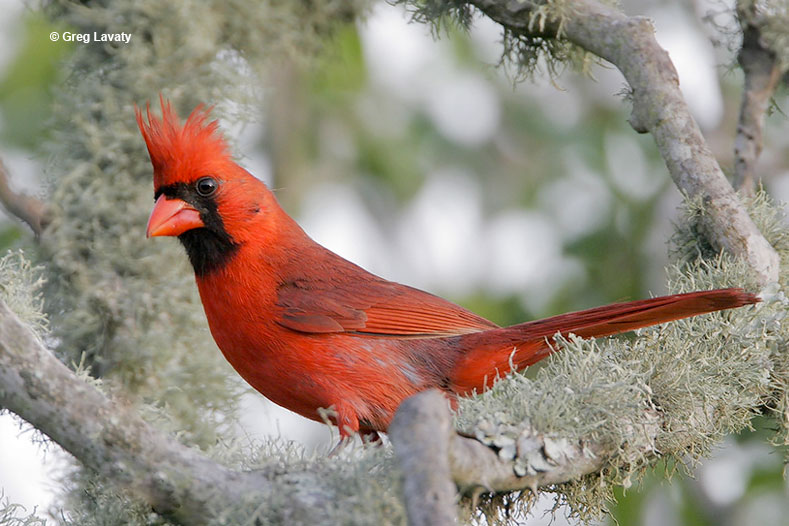
The Northern Cardinal is one of the most beautiful of North American birds! It’s wonderful to have them at the house, but how to attract cardinals?
This writing is part of “Best Feeders & Seeds for Cardinals”
In many parts of its range, this striking red and black bird is common. Take a walk in a local park, and you’ll probably hear and see a few of these crested songbirds. They can also come to feeders but not always. Cardinals can be more frequent in some backyards than others.
Fortunately, there are some easy ways to turn your backyard into a haven for Northern Cardinals and dozens of other beautiful birds. See this article to learn how!
How To Attract Cardinals?
When it comes to attracting cardinals, there is no right or wrong. However, you can make your garden more cardinal-friendly.
These are our go-to tips and tricks.
Provide Safe Habitat
Cardinals might visit a yard, but if they don’t feel safe, they won’t come back. Like any bird, Northern Cardinals need to be able to escape from predators as quickly as possible.
Related: 8 reasons why birds aren’t coming to your feeders
For this reason, they love a big backyard with lots of thick bushes. When a hawk or other predator appears, dense vegetation offers cardinals some protective shelter.
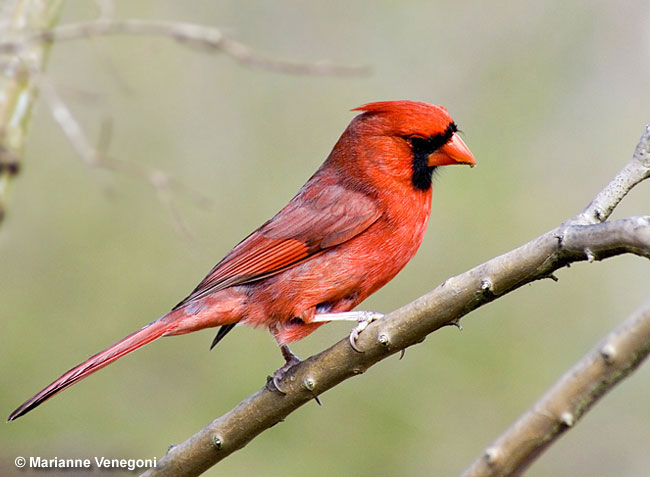
Keep Cats Indoors
Believe it or not, the biggest predator of the Northern Cardinal is probably the domestic cat. Make no doubt about it, whether a cat is well-fed or not, it will probably catch and kill cardinals.
We can’t blame our feline pets; cats have a natural instinct to catch birds and are highly adapted for that purpose. However, what we can do is keep them inside. This is the best way to keep both birds and our beloved pet cats safe.
Give them a Feeder they Can Use
Northern Cardinals like to visit feeders, but they prefer some feeders over others.
The best bird feeder for a cardinal is one with a platform. Cardinals are fair-sized birds that don’t fit on some of the smaller perches. They much prefer a platform where they can easily perch and pick up seeds without needing to turn their bodies to eat.
Related: What do cardinals symbolize?
Cardinals are often seen at the same feeders as chickadees, jays, and other common backyard birds.
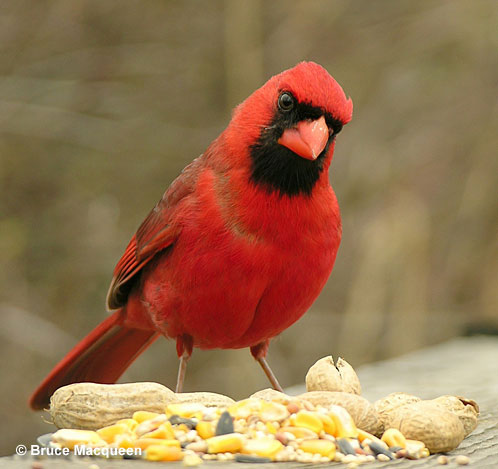
Cardinal Feeder Food
Cardinals are also adapted to eating larger seeds than small birds. Their big, deep beaks are strong and designed for eating a combination of bugs and hefty seeds.
Some of the more suitable seeds for cardinals are black oil sunflower seeds, safflower seeds, peanuts, striped sunflower seeds, cracked corn, and thistle. In winter, they also like to eat suet and mealworms. They can handle bigger seeds due to their strong beaks and larger jaw muscles.
Make sure the feed does not get too wet; mildew and bacteria growth is not good for anyone.
See The Best Seeds & Feeders for Cardinals
Use a Squirrel-Proof Feeder
The fewer squirrels you have at the feeder, the more birds you’ll have in the garden. Not only do squirrels deplete bird food, but they can also scare birds away.
Cardinals and other small birds stay away from squirrels because they can be dangerous. It might be hard to believe, but squirrels occasionally eat small birds and their eggs.
To prevent these mammals from turning your bird feeders into squirrel buffets, get specially designed squirrel-proof feeders. You can also use baffles and install hanging feeders at least 8 feet from places where squirrels can leap from.
Keep the Feeder Full
Like any bird, cardinals will stay in places with a reliable food source. This is especially important during fall and winter. To keep cardinals in the backyard, make sure to always keep your feeders filled with good cardinal food.
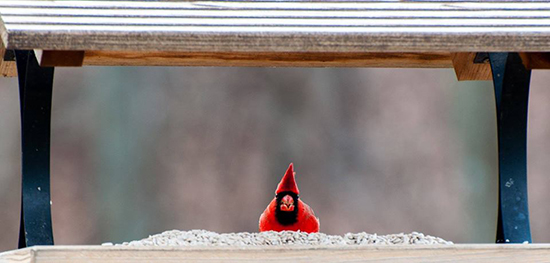
Good Butterfly Habitat = Good Cardinal Habitat
Who doesn’t like a garden full of beautiful butterflies? As a bonus, yards with plenty of butterflies are also great places for cardinals. The red and black songbirds love to eat caterpillars and can catch soft-bodied insects. They also feed these and other bugs to their babies.
Some of the better butterfly plants are snapdragons, mustard greens, hollyhock, fennel, and butterfly weed.
Plant Shrubs with Berries and Fruiting Trees
Berries and small fruits make up another important part of the Northern Cardinal diet. They can eat them at any time of the year but are most important during colder months.
Related: Plants That Attract Birds
Plant shrubs and trees like sumac, mulberry rose, grape, serviceberry, hackberry, and hawthorn, and your garden will become a cardinal haven!
Water Features
A good, clean water feature is one of the best ways to attract Northern Cardinals. These birds need to drink plenty of water, and they also love to bathe. On hot summer days, a shallow bird bath will be much appreciated! As long as the water doesn’t freeze, they can also use it in the winter. Solar-powered bird baths can help.
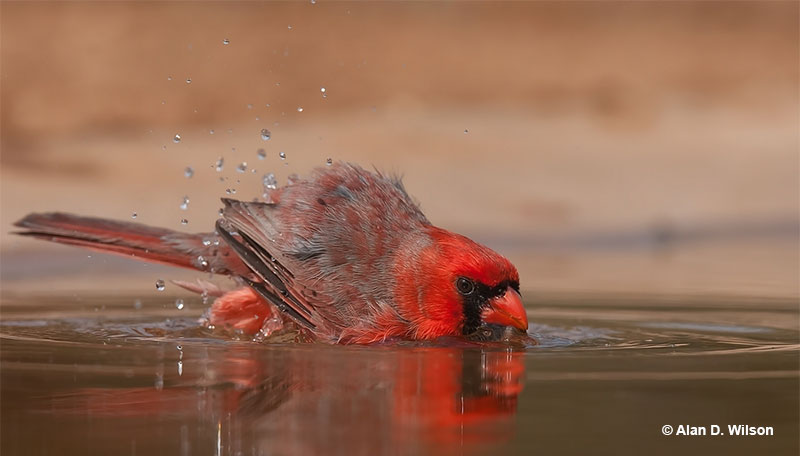
Help Cardinals Nest in the Backyard
The best, surefire way to share space with cardinals is by having them nest in your backyard. It’s easier said than done, but there are good ways to encourage them. The most important thing to do is give the birds plenty of low, dense bushes where they can build their nest.
Related: Best Bird Apps For Identification
Females are rarely seen during the breeding season, but they have the important task of staying at the nest and taking care of their young. Nest sites are often well-hidden.
Providing high perches where the male cardinal can sing is a good idea.
Related: What does a cardinal sound like?
This may help them set up a territory right in your yard. Another good suggestion is covering mirrors, windows, and other situations where cardinals can see their own reflection. Males think another cardinal is present and can fight with “the other bird” until they become injured or move to another spot!
What To Avoid?
Just as we can do certain things to attract cardinals to our backyards, there are other things that can drive cardinals away. While a bird feeder installed in a big, open meadow can be good for bird photography, cardinals won’t like it. They could visit it but probably won’t stay for long.
Related: What does it mean when a bird visits you?
Cardinals are vulnerable in open areas and probably feel anxious in such places. They need brushes and small trees to rest and take shelter in, and they won’t forage far from those habitats.
Essentially, removing too many bushes and trees also removes cardinals from the backyard.
Another thing to avoid is using small tube feeders with small perches. While these feeders can be good for goldfinches and other small birds, they are just too small for cardinals. They will probably try to feed now and then but will eventually give up.
We should also avoid using pesticides in the garden. In addition to outdoor cats, this is probably the biggest danger for cardinals. Although cardinals do eat seeds, during the nesting season, they mostly eat insects. Bugs are also the main diet for their babies and if that food is poisoned, it can kill or sicken the young cardinals.
Frequently Asked Questions
What attracts cardinals the most?
Backyards with bushes, small trees, and platform feeders attract cardinals the most.
What smells attract cardinals?
No smells attract cardinals. These songbirds find food by eyesight and not their sense of smell.
What feeder attracts cardinals the best?
A platform feeder attracts cardinals the best, but they come to other types of feeders, too.
What time of day are cardinals most active?
The time of day when cardinals are most active is the early morning and late afternoon.
What colors attract cardinals?
Cardinals love yellow – it is easy for them to see. Just like they stand out to us with their red plumage, yellow stands out for them!
Hope you enjoyed it!
And now start attracting these lovely creature – See The Best Feeders & Seeds for Cardinals”


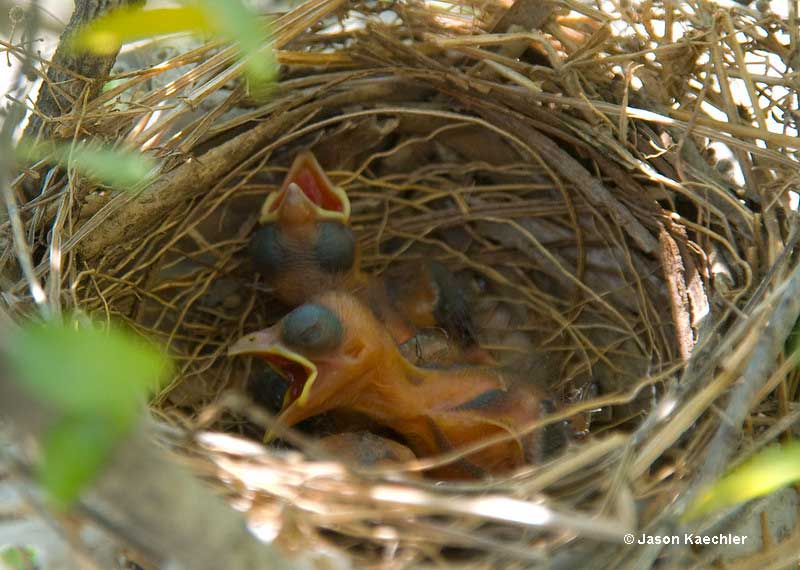
Mona Moorman
Friday 3rd of November 2023
I enjoyed the article, and look forward to checking out the "Bird Field Guides" at your website. I have a deck full of Cardinals in the winter and feed them black seed but I will try some of the others you suggested this winter.
Patrick O'Donnell
Wednesday 8th of November 2023
@Mona- We're glad you enjoyed the article. How nice to have a deck full of cardinals! Please let us know how your bird feeding goes.
John Fleming
Thursday 2nd of November 2023
Love the article about Cardinal
Patrick O'Donnell
Wednesday 8th of November 2023
@John- Glad to hear that! They really are beautiful birds.
Susan
Wednesday 1st of November 2023
Loved the article on cardinals! They are so beautiful! If you have a newsletter I'd love to get it.
Sle
Saturday 21st of October 2023
That was sooooo interesting!a lot of facts I never knew!
Carmen
Tuesday 31st of October 2023
@Patrick O'Donnell,
Patrick O'Donnell
Monday 23rd of October 2023
@Sle- We are glad you liked it!